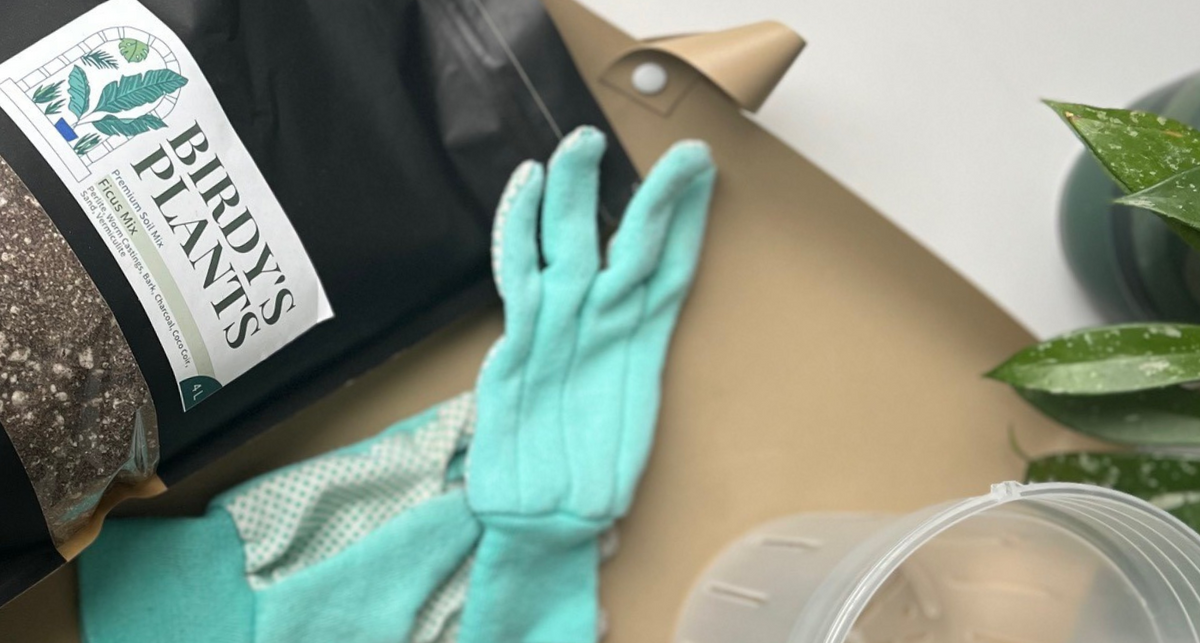
Step-by-Step Guide on Repotting a Plant
|
Time to read 3 min
|
Time to read 3 min
Repotting plants is at the heart of good plant care—and it's one of my favorite things to do! While it might seem daunting, with the right tools, knowledge, and tips, it can be a stress-free and rewarding process. Repotting is crucial for your plant's health and growth, whether it’s outgrown its pot or needs fresh soil to thrive.
There are many questions about when and how often to repot, and the answers can be conflicting. But don’t worry—we’ve got all your burning questions covered in this guide, along with our simple 5-Step Guide on How to Repot a Plant.
Excellent question! Plants need to be repotted for several reasons:
Growth: As plants grow, their roots need more space. A larger pot allows for better root expansion and overall better plant health.
Nutrient Renewal: Over time, soil can become depleted of nutrients. Fresh soil provides essential nutrients that are crucial for growth.
Improved Drainage: Fresh soil ensures better drainage, preventing soil compaction, root rot, and other water-related issues.
Environment: Providing a plant with good quality soil that resembles its environment offers a plant a better chance of growing larger, stronger, and healthier.
Contrary to popular belief, the success of repotting isn’t tied to a specific season. Repot your plants whenever they show signs of needing it, regardless of the time of year.
1. Prepare the New Pot: Ensure your new pot has drainage holes to prevent water from pooling at the bottom. As a rule of thumb, choose a pot that is 1-2 inches larger in diameter than the current pot. Sometimes, a larger pot is necessary if the roots are extremely overgrown.
For this guide, we will be repotting this Money Tree from a 5" to Birdy's Plants 7" Clear Orchid Pot.
2. Get the Plant Ready: Remove the plant from the old pot by gently patting the back of the pot while simultaneously pulling on the plant. If the plant is stuck, you can use a spoon to insert it into the soil and push the plant from the edge of the pot. If the roots are tightly wound in a circle, gently tease them apart to encourage outward growth. Inspect the roots carefully, checking the soil for any signs of bugs, diseases, or rotted roots (brown, mushy roots). Trim off any unhealthy roots with clean scissors.
3. Fill with Soil: Fill one-third of the new pot with fresh potting mix and center your plant in it. Gradually fill in around the plant with new soil. Once you have filled all the space, gently pat the soil into place to stabilize the plant. It’s important to leave about 1 inch at the top of the pot for watering.
4. Water Thoroughly: Depending on the state of the soil before repotting, you should either water thoroughly right away if the soil was dry, or allow the plant to rest for 2-3 days before watering if the soil was moist.
5. Post Repotting Care: Monitor your plant closely for the next few weeks, adjusting watering as needed and checking for any symptoms of transplant shock.
The frequency of repotting varies based on the plant's growth rate. Slow-growing plants like cacti and succulents typically need repotting every 3-5 years, while fast-growing plants like pothos, philodendron, hoya, and monstera benefit from annual repotting. The best way to determine when your plant needs repotting is by closely monitoring it for signs like roots outgrowing the pot, soil compaction, or slowed growth. Regularly assessing your plant’s condition will help you decide the optimal time for repotting.
Repotting your plant promotes healthier growth and allows you to refresh its environment. With these simple steps, you can ensure your plant thrives and brings joy to your space. Happy repotting!
Follow us on Instagram, Tiktok, or Facebook at @birdysplants or subscribe to our newsletter







